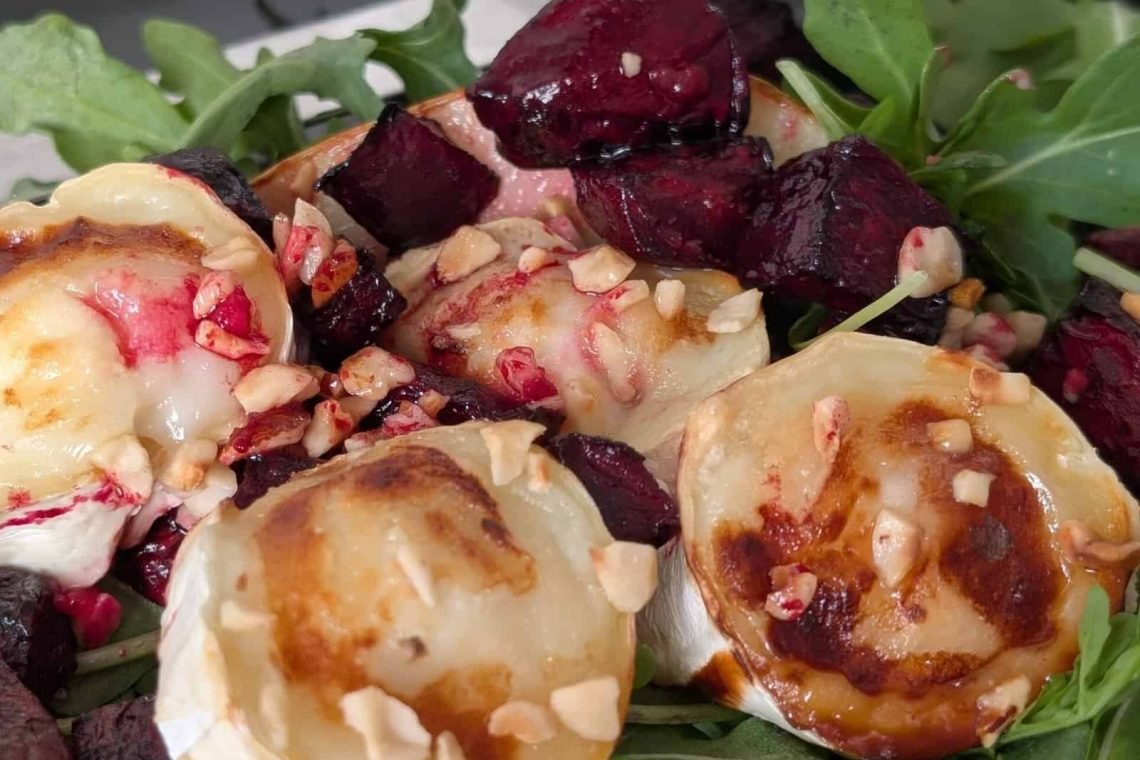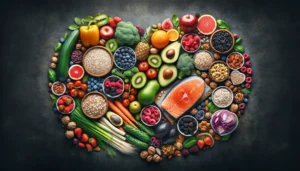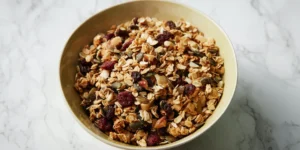Key Takeaways
- Always get tested for coeliac disease before removing gluten from your diet
- Join the Coeliac Society of Ireland to access their incredibly useful Food List and mobile app
- Make your life easier by batch-cooking dinners and turning leftovers into lunch
- Porridge bread made with gluten-free oats is a life-saver — tasty, customisable, and freezer-friendly
- Irish supermarkets offer great gluten-free ready meals and ingredients once you know where to look
First Step: Get Tested for Coeliac Disease
If you’re considering cutting gluten from your diet, the first (and most important) step is getting screened for coeliac disease — especially before you go gluten free.
Why? Because if you stop eating gluten before testing, it can interfere with the results (give you a false negative), making it harder to get an accurate diagnosis (you might be coeliac but are told you’re not). The gluten triggers the rise in the thing they’re screening for. Remove gluten, then remove the ability to screen for coeliac disease. Coeliac disease is a serious autoimmune condition that requires lifelong adherence to a strict gluten-free diet — and having a diagnosis gives you access to medical and dietary support as well as tax relief.
Who should be tested for coeliac disease? Those with gut issues, fatigue, weight loss, mouth ulcers, exemplained deficiency in vitamin B12, iron and folate, type 1 diabetes, thyroid disease, IBS and those with a family memeber with coeliac disease.
The guidance suggests that the following should also be tested: those with reduced bone mineral density (especially if young), unexplained neurological symptoms (my migraine is triggered by gluten!), unexplained fertility challenges, persistently raised liver enzymes (I had this too), dental enamel defects, Down’s syndrome, Turner syndrome.
What does testing involve?
Testing is straightforward and starts with a simple blood test at your GP’s clinic. They’ll check:
- IgA levels
- IgA tissue transglutaminase antibodies (tTGAs)
People with coleiac disease porduce tTGA and endomysial antibodies (EMA) when gluten is eaten. When tTGAs are ‘weakly positive’ – negative is less than 7, while 7-10 is weakly positive and >10 is positive. If these markers are elevated, you’ll likely be referred for a biopsy to confirm the diagnosis. If you get a weakly positive result they may then choose to check EMA levels. If you are deficient in IgA then they may check IgG EMA, DGP or IgG tTG. Don’t get bogged down in the letters – your GP or gastroenterologist will explain it to you. All in all it might sound a bit daunting, but getting clarity is worth it. For kids, they may just do bloods.
During COVID the diagnosis was different. So, if your story is differnt to the above mentioned process, fear not. During the pandemic they did a no-biopsy diagnosis in those that were less than 55 years old, did not have red flag symptoms, have symptoms of coeliac disease, had IgA tTG levels of more than 10 and had a second positive antibody blood test (EMA or IgA tTG if the GP wasn’t able to request EMA).
One thing I do see from time to time on blood results is that IgA levels were not checked. It’s important that these are also checked as IgA deficiency is more common in those with coeliac disease than the general population. When you have IgA deficiency you may have a false negative which can lead to a missed diagnosis. This is why they then need to use the IgG test and then biopsy (done when you get a scope – gastroscopy).
👉 Learn more about symptoms, diagnosis, and next steps in our guide: Understanding Coeliac Disease
Essential Tools for a Gluten-Free Life
You don’t need to go it alone. Ireland has excellent resources for people living gluten free — especially the Coeliac Society of Ireland.
Join the Coeliac Society
Membership costs around €35 per year, and it’s worth every cent. One of the biggest benefits is the Coeliac Food List — a detailed annual guide that breaks down which products are gluten free in Irish supermarkets.
The list is organised both by category (like bread, snacks, sauces, etc.) and by supermarket, so you can shop with confidence in Dunnes, Tesco, Aldi, Lidl, and SuperValu without constantly scanning labels.
Use the Food List & Mobile App
While the printed list is brilliant for online shopping or meal planning at home, the Coeliac Society app is a godsend when you’re out and about. Just scan barcodes or search by brand to see if something is safe.
Together, the book and app take the guesswork (and stress) out of grocery shopping.
Planning Meals the Easy Way
Switching to gluten free doesn’t mean you need to cook three meals a day from scratch. With a little planning, it can be much more manageable. However, it is harder to eat on the fly, and does add effort and restriction.
Cook Too Much Dinner — On Purpose
Here’s one of the best gluten-free hacks: intentional leftovers.
Lunches can be tricky when you can’t grab a sandwich or wrap from a shop. The solution? Make extra dinner and pack the rest for tomorrow’s lunch.
Whether it’s curry, bolognese, or traybakes — most dinners reheat beautifully the next day. Batch-cooking saves time, reduces stress, and keeps you full and fuelled.
Freeze-Friendly Porridge Bread with a Twist
Gluten-free bread is notoriously… meh. It does tend to be at least 3 times high in fibre than standard bread though. It is dry, bland, and crumbly. But porridge bread made with gluten-free oats and yoghurt? Game changer.
It’s easy to make, tastes fantastic, and you can customise it every time.
Flavour ideas:
- Rosemary
- Paprika
- Raisins, chopped walnuts & cinnamon
- Pecans with a touch of maple syrup
After baking, slice and freeze the bread for easy access. Just remember:
- Let it thaw naturally when possible — it tastes better than reheating from frozen
- Toasting straight from frozen is handy but can sometimes leave it a bit soggy (especially if you use toaster bags)
- I heat up mine in the microwave. Takes about 30 seconds and it means my peanut butter melts in on top.
Stock Up on Irish Gluten-Free Ready Meals
Even the most organised among us have days when cooking just isn’t going to happen. That’s where gluten-free ready meals come to the rescue — and thankfully, Irish brands are stepping up their game.
Here are some certified gluten-free options from well-known Irish producers, as listed in the 2025 Coeliac Society Food List:
| Brand | Gluten-Free Ready Meals |
|---|---|
| Cully & Sully | Cottage Pie, Chicken & Herb Pie, Shepherd’s Pie, Mushroom Risotto, Tomato Risotto, Charming Chicken Risotto |
| Kinsale Bay Food Co. | Chicken & Kale Pie, Cottage Pie, Fish Pie, Shepherd’s Pie, Smoked Fish Pie |
These are ideal for days when:
- You’ve run out of leftovers
- Cooking isn’t appealing
- You need something safe and convenient
I haven’t eaten all of them, but I have tried some of them. I’ll add more to the list the more brands I try.
Quick & Tasty Dinners When You’re Wrecked
Let’s be honest — one of the biggest adjustments on a gluten-free diet is having to cook more often. Eating out is doable in Ireland (thankfully!), but when you’re knackered after a long day, you need shortcuts.
Here are some Irish-friendly options that strike the balance between convenience and real food:
- Mash Direct: Their carrot & parsnip mash or carrot & swede mash pairs beautifully with a roast chicken.
- Lidl’s own-brand mashed veg: Budget-friendly and gluten-free — especially handy for weekday dinners.
I’m new to the gluten free diet, so will try more brands and add to this list over time!
Tip: Batch-roast a whole chicken or large cuts of meat on Sundays. Use leftovers for lunches at the start of the week. A Sunday roast isn’t just for nostalgia anymore, it’s mainly so I get a nice lunch for a tleast 2 days a week 🙂
Freezer = Your Friend
Stock up on frozen veg, pre-chopped stir-fry mixes, and pulses (tins & microwave pouches are a saviour) to make your weeknight meals quicker and easier.
Fakeaways: Takeaway-Style Dinners at Home
Between the cost of takeaways and the extra expense of gluten-free alternatives, ordering in can feel like a luxury you can’t justify — especially regularly. That’s where fakeaways come in.
These are homemade meals that hit the same craving buttons as your favourite takeaway, but without the gluten (or the bill).
A few ideas to start:
- Homemade curry night. I’ve to perfect my 2 ingredient naan recipe (self raising flour & yoghurt) for a GF version. I’ll keep you posted. However, you can get poppadoms that are GF as they’re made on lentil flour and oil.
- Gluten-free pizza bases topped with passata, cheese, and roasted veg. Again, need to try making the base on self raising flour and yoghurt which will likely win out over the more commonly available offerings.
- Rose & Jim gluten-free options (frozen and available in many Irish stores — worth keeping an eye out)
Gluten-Free Lunches for Busy Days
Gluten-free lunches can be a pain — especially if you’re out and about or short on time. But with a little strategy, you can avoid both hanger and gluten contamination.
Easy Options When Working from Home
Here are some satisfying and nutritious gluten-free lunches that you can batch-cook or throw together in under 10 minutes:
Baked Feta & Veg Pasta Bowl
- Roast cherry tomatoes, red onion, peppers, and chickpeas with a block of feta, olive oil, and balsamic vinegar
- Bake at 180°C for 30–40 minutes
- Toss with gluten-free lentil or rice pasta
Baked Eggs in Beans
- Use an ovenproof dish, fill with baked beans (e.g. Batchelors or Heinz — double-check the label)
- Crack in 2 eggs, sprinkle with cheese and chilli flakes
- Bake until the eggs are set — about 15 minutes
Soup + Toast Combo
- If you haven’t made your own soup, go for a gluten-free one from Cully & Sully or Kinsale Bay
- Pair with slices of porridge bread (from the freezer)
- Add cheddar, avocado, hummus, or mozzarella to make it more filling
Supercharged Salads
- Leafy base (spinach, rocket, or mixed leaves)
- Cheese (goat’s, brie, or mozzarella)
- Fruit (apple, pear, or dried cranberries)
- Candied nuts (walnuts or pecans tossed with honey and baked in the air fryer)
- Add chickpeas, beans, or a pouch of cooked grains for protein
- Serve with extra gluten-free oatcakes like Nairn’s rosemary crackers if required.
I also sometimes buy ready made veg salads like a grated carrot one and pair with rice or corn cakes and hummus +/- cheese.
Breakfasts That Don’t Taste Like Cardboard
Here are some go-to gluten-free breakfast ideas that are simple, satisfying, and based on Irish supermarket staples:
- Porridge bread with:
- Peanut butter + banana
- Scrambled eggs + air-fried cherry tomatoes
- Gluten-free cereals like:
- Buckwheat flakes (e.g. Kelkin)
- Special Flakes (M&S)
- Gluten-free granola (Dunnes or M&S) with yoghurt and fruit
- High-protein yoghurts with fruit salad and nuts
- Overnight oats with berries and seeds
- Porridge (hot or baked) made with gluten-free oats
Gluten-Free Snacks Without the €3 Price Tag
Ideas to keep in your bag, desk, or freezer:
- Homemade flapjacks (freeze them in individual portions)
- Fruit + yoghurt (Glenisk, Activia, and many store brands offer gluten-free options)
- Energy bars
- Rice or corn cakes with:
- Nut butter
- Cream cheese or soft cheese
- Avocado or guacamole
- Hummus
- Cheddar or ricotta
I did buy Foods of Athenry crackers and bars for a quick option. Kelkin also have yoghurt and chocolate rice cakes.
Dinners That Don’t Require a Complete Overhaul
Many Irish family favourites can be easily adapted to be gluten free — or are already naturally gluten free!
Easy swaps and go-tos:
- Spaghetti Bolognese: Just switch to gluten-free pasta
- Lasagne: Use gluten-free lasagne sheets; make béchamel with 50g butter, 50g cornflour, and 500ml milk
- Meat/fish + potatoes + veg: Naturally gluten free
- Curries, stews, slow-cooker meals with rice or quinoa
- Tray bakes using root veg, sweet potato, rice, or pulses
Time-saving tip:
Frozen veg is a great shortcut — just note that it often takes slightly longer to cook than fresh.
Final Thoughts: Be Kind to Yourself
Starting a gluten-free diet — especially if you’re doing it for health reasons — is a big shift. It takes time, trial, and a bit of error.
Some days, you’ll be organised and glowing with smugness. Other days, you’ll realise you’re out of porridge bread and eyeing the kid’s cereal in despair.
That’s okay.
The key to making it work long-term is to find your rhythm, build up your go-to meals, and give yourself grace when you need convenience or a break.
And remember — Ireland is one of the most coeliac-friendly countries in Europe. There’s so much support available if you know where to look.
FAQs: Gluten-Free in Ireland
1. What are the best gluten-free brands in Ireland?
Some popular and widely available gluten-free brands include Kelkin, BFree, Nairn’s, Freee by Doves Farm, and supermarket own-brands like Tesco and Dunnes gluten-free ranges. Alsi and Lidl also offer GF foods liek bread, pasta and oats. Irish producers like Cully & Sully and Kinsale Bay Food Company also offer certified meals.
2. Can you eat out gluten-free in Ireland?
Yes — Ireland is very coeliac-aware. Many restaurants offer gluten-free menus or clearly label gluten-free options. Always inform your server of your dietary needs, and double-check for cross-contamination protocols.
3. Do Aldi and Lidl offer gluten-free products?
Absolutely. Both Aldi and Lidl carry gluten-free options, especially under their own-brand labels. Lidl’s “Just Free” range includes breads, pasta, oats and biscuits. Aldi’s gluten-free selection includes cereals, crackers, and baking mixes.
4. What supermarkets are best for gluten-free shopping?
Tesco, Dunnes, SuperValu, and M&S have excellent gluten-free selections. Aldi and Lidl are great for staples but may have fewer speciality items. The Coeliac Society’s Food List helps you identify safe options in each.
5. How can I know if a food is gluten free?
Look for the crossed grain symbol, check the ingredients list for wheat, barley, or rye, and use the Coeliac Society’s app or printed Food List. When in doubt, don’t risk it.
6. Is gluten free food more expensive in Ireland?
Generally, yes. Gluten-free breads, cereals, and snacks are often more expensive. To save money, cook at home, use naturally gluten-free ingredients, and stock up on frozen basics when they’re on sale.
7. What’s the easiest gluten-free bread to make?
Porridge bread made with gluten-free oats and yoghurt is one of the easiest and tastiest options. It freezes well, can be flavoured with spices or nuts, and is far cheaper than shop-bought loaves. But… it is owrth noting that gluten free breads tend to be 3 times high in fibre than typical brown breads!
8. What are some quick gluten-free dinner ideas?
Try:
- Bolognese with gluten-free pasta
- Roast chicken + mash + frozen veg
- Curry with rice
- Tray bake with root veg and salmon
- Stir-fry with tamari and rice noodles
9. Is oat porridge gluten free?
Only if it’s made with gluten-free oats, which are grown and processed separately to avoid contamination. Always check the packaging to be safe.
10. Should I go gluten free if I haven’t been diagnosed with coeliac disease?
It’s best to speak with a dietitian or GP first. Removing gluten before testing can skew results. Gluten-free diets can help with certain conditions like IBS or migraines — but diagnosis first is key.











